S-30 through S-41: Difference between revisions
Pbcjohnston (talk | contribs) mNo edit summary |
Pbcjohnston (talk | contribs) Finished adding photos |
||
| Line 79: | Line 79: | ||
=== <big>S-38 (SS-143)</big> === | === <big>S-38 (SS-143)</big> === | ||
[[File:S-38 build.jpg|left|500px|Photo NH 97960 courtesy of NHHC.]] | |||
<div style="text-align: justify;"><span style="color:#00008B"></span></div> | <div style="text-align: justify;"><span style="color:#00008B">S-38 shown under construction at the Bethlehem San Francisco yard, March 29, 1923. S-38 was one of the boats built on the west coast that had the engine rebuilds done there. Electric Boat sent a team of engineers to San Francisco along with a train car full of parts to do the rebuilds. This accounts for the rather late date of this photo. Note the long superstructure skeg at her stern, tapering gently down to the rudder. This is the original design, which proved to be lightly built and prone to severe corrosion. A portion of it was later removed on all of the EB design boats.</span></div> | ||
[[S-38|See More S-38 photos]] | [[S-38|See More S-38 photos]] | ||
| Line 87: | Line 87: | ||
=== <big>S-39 (SS-144)*</big> === | === <big>S-39 (SS-144)*</big> === | ||
[[File:S-39 stbd.jpg|left|500px|USN photo # 80-G-466176, courtesy of NARA.]] | |||
<div style="text-align: justify;"><span style="color:#00008B"> | <div style="text-align: justify;"><span style="color:#00008B">S-39 making a surface run off Tsingtao (now Qingdao), China, June 13, 1930. The after end of the conning tower fairwater has been raised, and the superstructure skeg has been cut away. The rudder can just be seen right at the waterline on the far left. The pressure hull around the motor room is underwater in this view, between the end of the superstructure and the rudder. S-39 has yet to receive the safety upgrades mandated after the [[Notable Submarine Accidents|'''S-4 disaster''']] of 1927.</span> | ||
[[S-39|See More S-39 photos]] | [[S-39|See More S-39 photos]] | ||
| Line 95: | Line 95: | ||
=== <big>S-40 (SS-145)</big> === | === <big>S-40 (SS-145)</big> === | ||
[[File:S-40 stbd.jpg|left|500px|Photo in the private collection of Ric Hedman.]] | |||
<div style="text-align: justify;"><span style="color:#00008B"> | <div style="text-align: justify;"><span style="color:#00008B">S-40 on a calm sea, perhaps preparing to moor to a tender. The location is unknown, but is likely during her service with the Asiatic Fleet. Photo date is approximately 1925. She is sporting yet another variation in how her name is displayed, this time with the "40" painted prominently on the aft superstructure skeg.</span></div> | ||
[[S-40|See More S-40 photos]] | [[S-40|See More S-40 photos]] | ||
| Line 103: | Line 103: | ||
=== <big>S-41 (SS-146)</big> === | === <big>S-41 (SS-146)</big> === | ||
[[File:S-41 black.jpg|left|500px|Photo in the private collection of Ric Hedman.]] | |||
<div style="text-align: justify;"><span style="color:#00008B"> | <div style="text-align: justify;"><span style="color:#00008B">S-41 is shown here in Asiatic waters, circa 1939-1940. By this time she had been painted in the standard flat black, a scheme that the Navy adopted for all submarines in 1935. She has only her hull number, 146, displayed. This was also part of a standardization effort, intended to do away with all of the topside naming variations that had persisted through the 1920's and 1930's.</span> | ||
[[S-41|See More S-41 photos]] | [[S-41|See More S-41 photos]] | ||
Revision as of 11:32, 9 August 2023

Design and Construction Notes
These boats suffered from the same engine problems as the Quincy built boats, with their introduction into active service being greatly delayed until the solution of a larger diameter crankshaft was decided upon and implemented. Once fixed, these boats provided great service to the fleet, and they could be found in every theater that the U.S. Navy operated in.
The initial lack of adequate numbers of fleet boats meant that the Navy relied heavily on these submarines in the early months of the war. Most made many war patrols, with the high operational tempo being very hard on these then 20 year old submarines. Two of them were lost. The remainder served until the end of the war, receiving many upgrades like air conditioning, radar, rebuilt superstructures, and additional guns. The remaining boats were quickly discarded at the end of the war, but they had proved their worth by stepping up for war duty when called for.S-30 (SS-135)
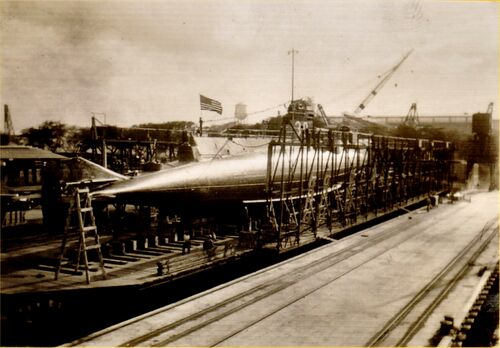
S-31 (SS-136)
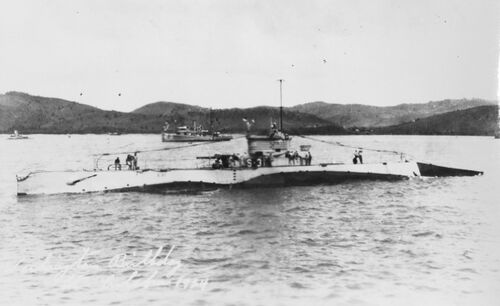
S-32 (SS-137)
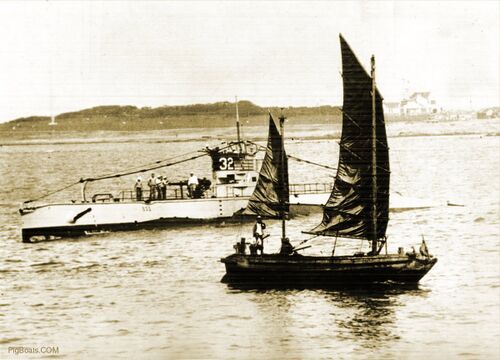
The photo is captioned on the back and states that the submarine is "...now stationed at Manila..." with a date of February 1, 1932. Though this same exact photo is seen in a newspaper story in late 1928 and says it is at Tsingtao (now Qingdao), China.
It is likely that the photo was taken in 1928 in or near a Chinese port and was later reused by a newspaper.S-33 (SS-138)
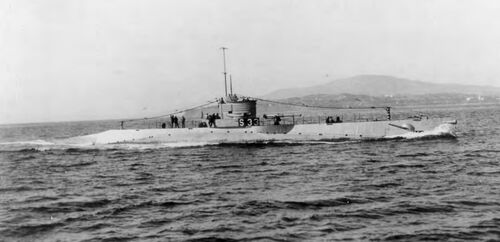
S-34 (SS-139)
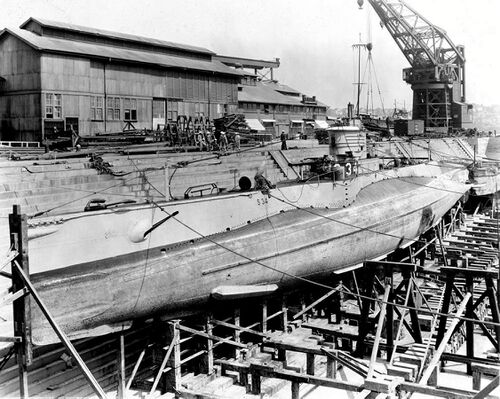
S-35 (SS-140)
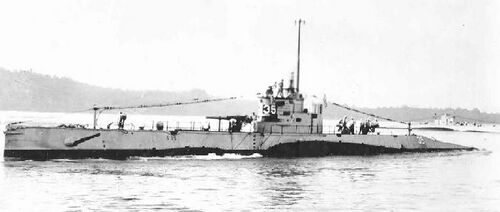
S-36 (SS-141)*
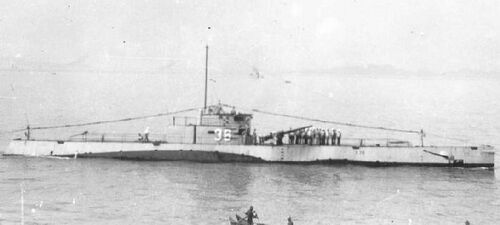
S-37 (SS-142)
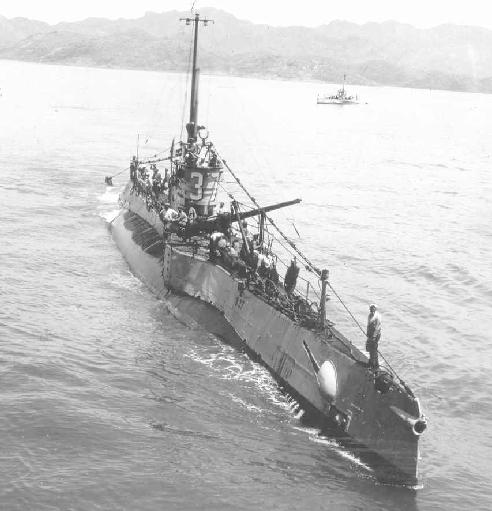
S-38 (SS-143)
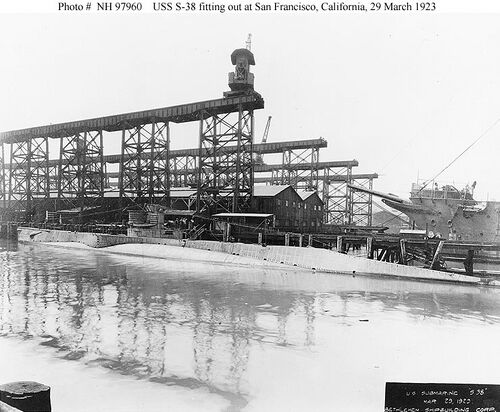
S-39 (SS-144)*
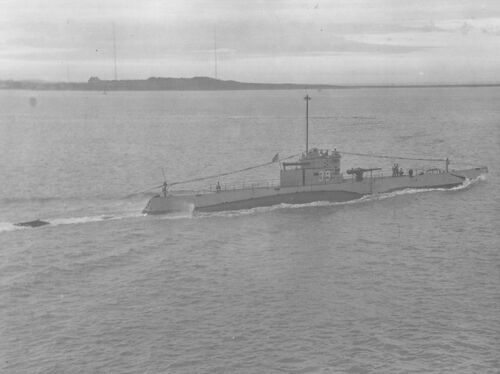
S-40 (SS-145)
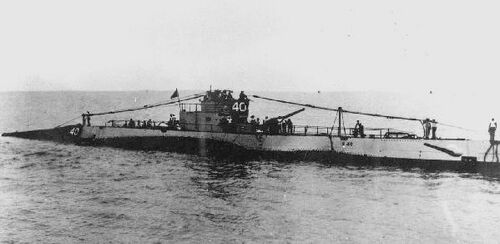
S-41 (SS-146)
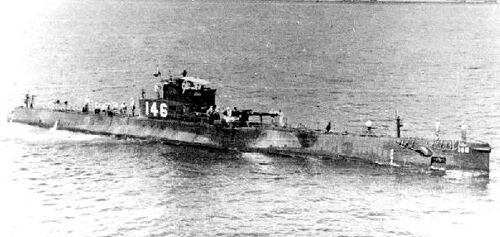
Page created by:
Ric Hedman & David Johnston
1999 - 2023 - PigBoats.COM©
Mountlake Terrace, WA, Norfolk, VA
webmaster at pigboats dot com